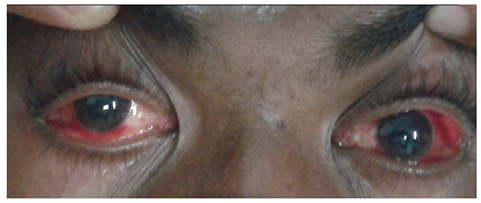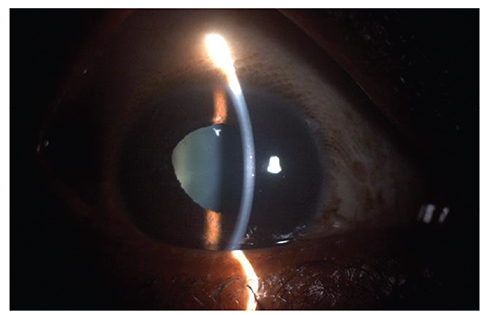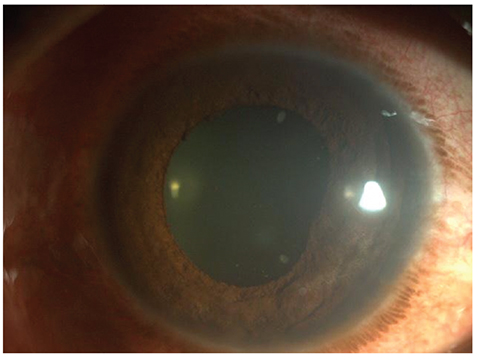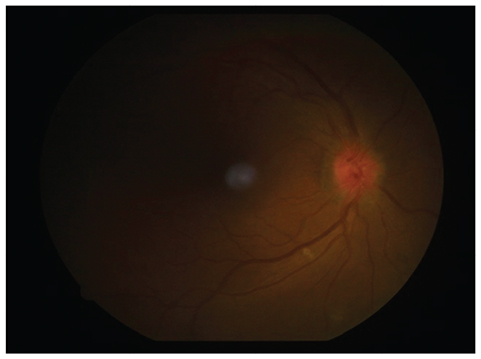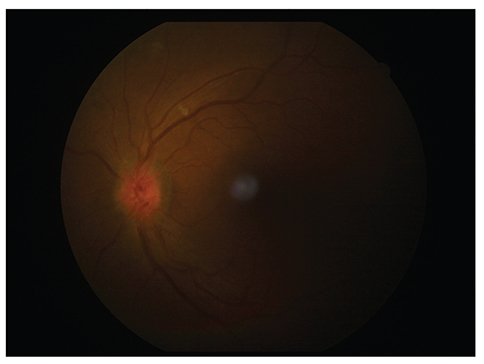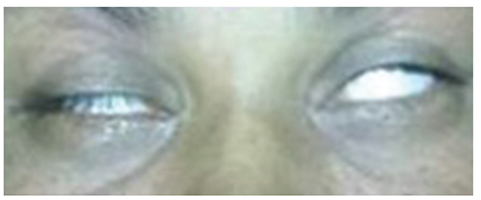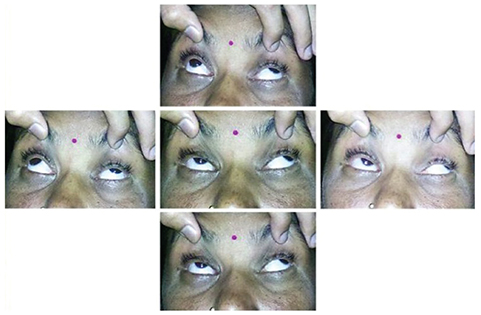Korean J Ophthalmol.
2015 Aug;29(4):256-262. 10.3341/kjo.2015.29.4.256.
Ocular Manifestations of Venomous Snake Bite over a One-year Period in a Tertiary Care Hospital
- Affiliations
-
- 1Department of Ophthalmology, Jawaharlal Institute of Postgraduate Medical Education and Research, Puducherry, India. praveenkumarseth@gmail.com
- KMID: 2363770
- DOI: http://doi.org/10.3341/kjo.2015.29.4.256
Abstract
- PURPOSE
Ocular manifestations in snake-bite injuries are quite rare. However, the unusual presentations, diagnosis and their management can pose challenges when they present to the ophthalmologist. Early detection of these treatable conditions can prevent visual loss in these patients who are systemically unstable and are unaware of their ocular condition. To address this, a study was conducted with the aim of identifying the various ocular manifestations of snake bite in a tertiary care center.
METHODS
This is a one-year institute-based prospective study report of 12 snake bite victims admitted to a tertiary hospital with ocular manifestations between June 2013 to June 2014, which provides data about the demographic characteristics, clinical profiles, ocular manifestations, and their outcomes.
RESULTS
Twelve cases of snake bite with ocular manifestations were included of which six were viper bites, three were cobra bites and three were unknown bites. Six patients presented with bilateral acute angle closure glaucoma (50%), two patients had anterior uveitis (16.6%) of which one patient had concomitant optic neuritis. One patient had exudative retinal detachment (8.3%), one patient had thrombocytopenia with subconjunctival hemorrhage (8.3%) and two patients had external ophthalmoplegia (16.6%).
CONCLUSIONS
Bilateral angle closure glaucoma was the most common ocular manifestation followed by anterior uveitis and external ophthalmoplegia. Snake bite can result in significant ocular morbidity in a majority of patients but spontaneous recovery with anti-snake venom, steroids and conservative management results in good visual prognosis.
Keyword
MeSH Terms
-
Acute Disease
Adolescent
Adult
Animals
Antivenins/therapeutic use
*Elapidae
Female
Follow-Up Studies
Glaucoma, Angle-Closure/diagnosis/*etiology/therapy
Humans
Male
Middle Aged
Ophthalmoplegia/diagnosis/*etiology/therapy
Prospective Studies
Snake Bites/*complications/diagnosis/therapy
Snake Venoms/*poisoning
Tertiary Healthcare
Time Factors
Uveitis, Anterior/diagnosis/*etiology/therapy
*Viperidae
Young Adult
Antivenins
Snake Venoms
Figure
Reference
-
1. Kasturiratne A, Wickremasinghe AR, de Silva N, et al. The global burden of snakebite: a literature analysis and modelling based on regional estimates of envenoming and deaths. PLoS Med. 2008; 5:e218.2. Adukauskiene D, Varanauskiene E, Adukauskaite A. Venomous snakebites. Medicina (Kaunas). 2011; 47:461–467.3. Halesha BR, Harshavardhan L, Lokesh AJ, et al. A study on the clinico-epidemiological profile and the outcome of snake bite victims in a tertiary care centre in southern India. J Clin Diagn Res. 2013; 7:122–126.4. Jarwani B, Jadav P, Madaiya M. Demographic, epidemiologic and clinical profile of snake bite cases, presented to Emergency Medicine department, Ahmedabad, Gujarat. J Emerg Trauma Shock. 2013; 6:199–202.5. Raina S, Raina S, Kaul R, et al. Snakebite profile from a medical college in rural setting in the hills of Himachal Pradesh, India. Indian J Crit Care Med. 2014; 18:134–138.6. Gilkes MJ. Snake venom conjunctivitis. Br J Ophthalmol. 1959; 43:638–639.7. Chu ER, Weinstein SA, White J, Warrell DA. Venom ophthalmia caused by venoms of spitting elapid and other snakes: report of ten cases with review of epidemiology, clinical features, pathophysiology and management. Toxicon. 2010; 56:259–272.8. Chen CC, Yang CM, Hu FR, Lee YC. Penetrating ocular injury caused by venomous snakebite. Am J Ophthalmol. 2005; 140:544–546.9. Kleinman DM, Dunne EF, Taravella MJ. Boa constrictor bite to the eye. Arch Ophthalmol. 1998; 116:949–950.10. Nayak SG, Satish R, Nityanandam S, Thomas RK. Uveitis following anti-snake venom therapy. J Venom Anim Toxins Incl Trop Dis. 2007; 13:130–134.11. Iqbal M, Khan BS, Ahmad I. Endogenous endophthalmitis associated with snake bite. Pak J Ophthalmol. 2009; 25:114–116.12. Srinivasan R, Kaliaperumal S, Dutta TK. Bilateral angle closure glaucoma following snake bite. J Assoc Physicians India. 2005; 53:46–48.13. Hayreh SS. Transient central retinal artery occlusion following viperine snake bite. Arch Ophthalmol. 2008; 126:870–871.14. Singh J, Singh P, Singh R, Vig VK. Macular infarction following viperine snake bite. Arch Ophthalmol. 2007; 125:1430–1431.15. Rao BM. A case of bilateral vitreous haemorrhage following snake bite. Indian J Ophthalmol. 1977; 25:1–2.16. Menon V, Tandon R, Sharma T, Gupta A. Optic neuritis following snake bite. Indian J Ophthalmol. 1997; 45:236–237.17. Takeshita T, Yamada K, Hanada M, et al. Case report: extraocular muscle paresis caused by snakebite. Kobe J Med Sci. 2003; 49:11–15.18. Del Brutto OH, Del Brutto VJ. Neurological complications of venomous snake bites: a review. Acta Neurol Scand. 2012; 125:363–372.
- Full Text Links
- Actions
-
Cited
- CITED
-
- Close
- Share
- Similar articles
-
- Clinical Review of Venomous Snake Bite
- A Case with Ophthalmoplegia Following Snake Bite
- Relation of First Aid associated with Complications after Snake Bites
- Systemic Complications occurring after Korean Venomous Snake Bite, with focus on Hematologic and Neurologic Complications
- A Case Report of Snake bites During Pregnancy

